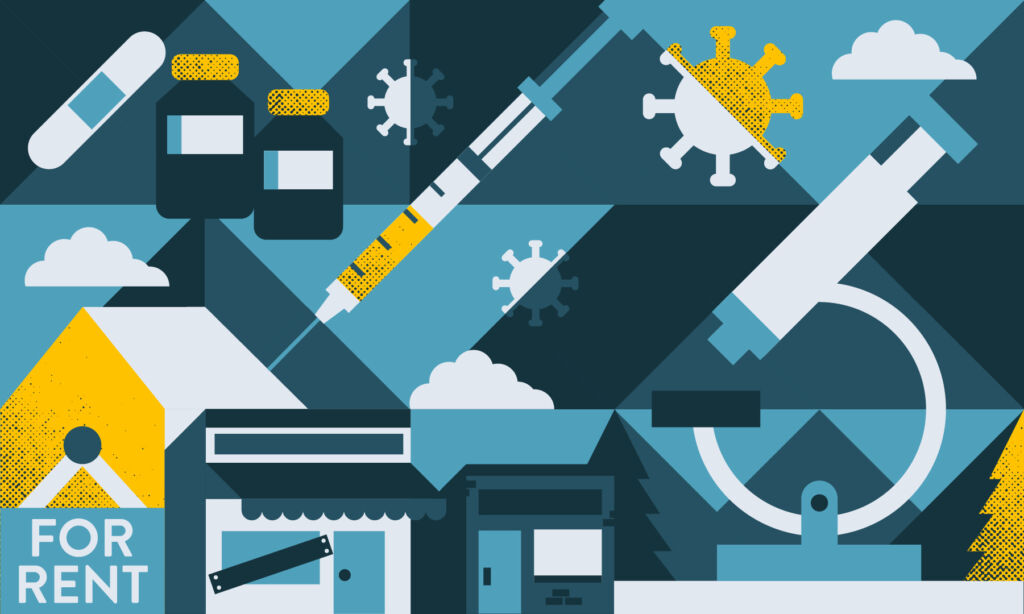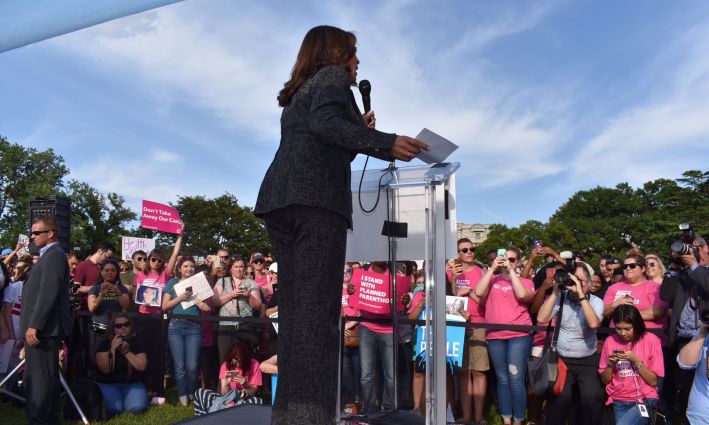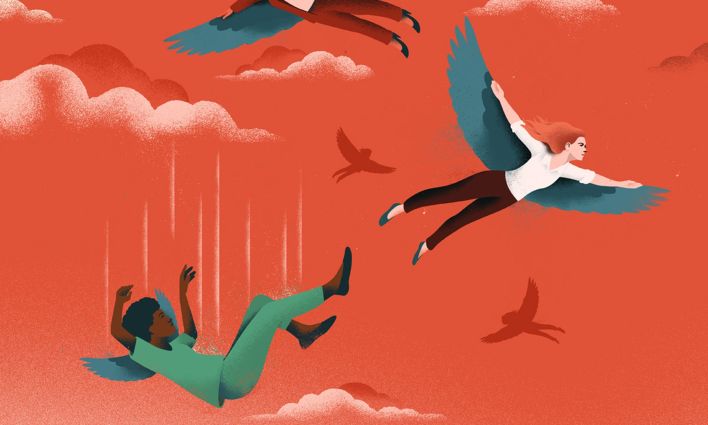This week everyone has their eye on the “end” of the pandemic, with the acceleration of vaccination campaigns, the easing of border restrictions, and the promise of summer barbeques, public concerts, and community gatherings.
Life appears to be finally getting back to “normal” after 16 long, harsh months.
In the rush back to “normal”, though, we can’t forget who paid the price for our shambolic response to the COVID-19 pandemic and our collective failure to protect the most marginalized—people and communities who are still reeling from loss and are now at risk being left even further behind.
The end of the pandemic is in sight—but not for everyone
Even now, according Public Health Toronto, rates of infection among South Asian and Black residents far exceed those reported among white and East Asian residents, as has been the case through three waves of the pandemic. This, despite concerted local efforts to target vulnerable communities in Toronto’s vaccination campaign.
The Torontonians least at-risk are being vaccinated in large numbers. Those most at risk are not.
No one is even sure how many people with disabilities have been vaccinated because the data isn’t being collected.
Well-founded distrust of the medical system, complex booking systems, no attendant care or support with translation, no internet, essential workers not having the time to travel to vaccination clinics, single mothers not having anyone to take care of their kids. This is what structural racism looks like. This is what structural ableism looks like. This is what structural sexism looks like.
We see the rush to “normal” in recent discussions about the economy, too. Canada’s employment rate has now nearly fully recovered from its unprecedented drop of 10 percentage points last year, but a gap of 2.5 percentage points remains. That 2.5 percent represents almost 600,000 people. As with vaccinations, the “last mile” in our labour market recovery may be the most difficult.
The recovery is proving to be as unequal as the downturn. Some groups of workers recouped their employment losses quite quickly last summer (most working from home didn’t skip a beat at all), but those working in low-wage, front-facing sectors, such as accommodation and food services and retail trade, have been on an economic roller coaster—all caught on the wrong side of Canada’s on again, off again recovery.
The following chart shows our K-shaped recovery—a pattern evident among both women and men. The level of female employment in vulnerable industries this May was -17% below February 2020 levels, down 10 percentage points from last August (the recovery high point to date). Employment among male workers working in these sectors was -14% below pre-pandemic levels.
Levels of financial stress remain particularly high among Indigenous and racialized households, as well as among people with disabilities. In May’s labour force report, around one-fifth of respondents were still reporting difficulty paying expenses related to housing, food, transportation, clothing and other necessary expenses.
This has been the most troubling trend of the economic downturn. Low-wage workers and their families are in the fight of their economic lives while high-income earners have prospered—not only continuing with their jobs in relative safety but, also, realizing the gains associated with the run-up in housing values, pension plans, investment holdings and the savings associated with working from home and deferred travel and entertainment.
Emergency benefits winding down but where to next?
Workers in these hard-hit sectors have been hanging on, relying on emergency benefits and a pandemic-tweaked EI system, but these programs are set to expire in early fall. In a time of great economic upheaval, runaway shelter costs and rising evictions, these benefits have delivered crucial support to groups that are poorly served by established income support programs. They prevented a calamitous rise in poverty.
Had it not been for the emergency benefits and other one-time payments last year, Statistics Canada estimates that the market poverty rate would have risen to almost 40%* last April. As it was, low-weekly earnings were more than offset by government pandemic relief benefits, with the poverty rate falling below the rate posted in February 2020 (at 23%) through the remainder of the year.
These programs were especially important for racialized and Indigenous workers. The poverty rate among racialized families, for instance, was effectively halved from May through August last year, rising slightly through the fall as earnings improved up until December.
These same workers and their families, numbering in the millions, are now facing tremendous uncertainty as the value of the Canada Recovery Benefit, which supports precarious workers and the self-employed, is scaled back to $300 per week over the summer, phasing out altogether on September 25, and EI beneficiaries come to the end of their claim.
After September, employment insurance calculations for new claims are set to go back to the old system, with a temporary eligibility threshold of 420 hours to qualify, but reduced weeks of benefit in many areas of the country.
More broadly, as the federal and provincial budgets released this spring reveal, expenditures for income security and related supports are being quickly ratchetted back to pre-pandemic levels, despite the scale and significance of the challenges ahead, the imperative to “build back better” and, it needs to be stressed, historically low interest charges on public debt.
Placing a bet on economic growth to get the job done
Governments are betting that, in response to successful vaccination campaigns and pent-up consumer demand, labour markets will finally and fully snap back, that the resulting economic growth will propel us forward.
That’s the hope but we aren’t there yet. Even now, some employers are complaining about “labour shortages” and the generosity of emergency benefits and their impact on work incentives, lobbying governments (with success) to scale back assistance. Their opposition to continuing support for low-wage workers is hypocritical, to say the least, given the scale of government support for business, including large corporations that booked huge profits in 2020 and paid out millions in bonuses and dividends.
Workers are rightly reluctant to return to work and risk infection for a few hours at minimum wage. The purpose of the emergency benefits was to prevent workers from being forced into situations where they would have to sacrifice their health and well-being to put food on the table. We failed at this task—as the deaths among vulnerable workers in warehouses, agricultural industries and health facilities proved. The refusal to mandate minimum paid sick leave across the country continues to threaten people’s health and security and undermine our efforts to re-open the economy.
As pandemic supports wind down, we are at risk of leaving many people and communities behind. The growing number of the long-term unemployed is particularly troubling. As of mid-May, one-half of Canada’s two million jobless who say they want a job have been without one for more than a year. Young people (aged 15-29 years) have been effectively sidelined, making up 36% of the jobless who want work and 30% of the long-term unemployed.
Another 380,000 people have left the labour market altogether, including 275,000 women—many of whom are putting aside their own financial security in order to take on unpaid caring responsibilities and stickhandle the ongoing demands of the pandemic.
Getting back to “same old, same old” will do nothing to address these entrenched disparities
A hope and a prayer aren’t going to be enough to dismantle systemic barriers that are holding back marginalized communities. A hope and a prayer won’t be enough to ensure that children and young people whose education and employment opportunities have been turned upside down get the assistance they need to excel. A hope and a prayer won’t be enough to move forward with decolonization and restitution for Indigenous peoples, who have suffered and continue to suffer grievous harms.
The big question is whether we all, by default, revert to the “same old, same old” after the crisis. Or will we seize the opportunity to build back better, recognizing that this last mile will be the hardest?
This will require a plan with clear goals, timelines and a division of labour; a plan that centres the voices and experiences of marginalized people and that includes the long-term investments needed to make it a reality.
Watch out for the Alternative Federal Budget 2022 coming this September, which outlines our plan for an inclusive, just and sustainable recovery.
*The poverty threshold used here is defined as households living on less than 50% of median provincial after-tax income, adjusted for family size.







